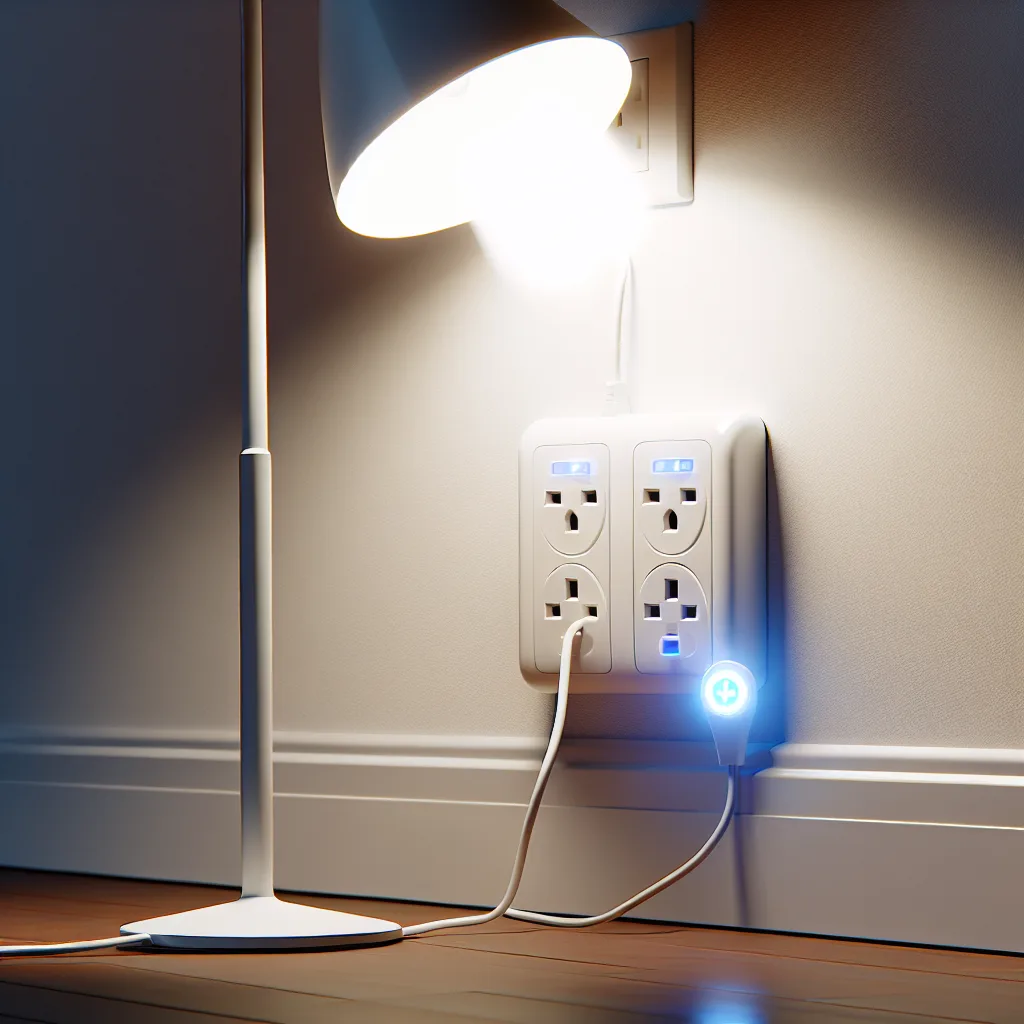Tired of your Wi-Fi sockets randomly turning off and on? Let’s dive into the common causes for a smart plug keeps disconnecting and get it sorted.
That Annoying Clicking Sound
You know the sound. That quiet but maddening click… click… click coming from the corner of the room. You’re trying to watch a movie, and the lamp plugged into your smart extension socket is having a party of its own, turning on and off like a disco strobe.
It’s a surprisingly common and frustrating issue. You bought these gadgets to make life easier, not to add a random rave to your living room. So, what’s going on when a smart plug keeps disconnecting and cycling like this?
More often than not, that clicking is the sound of an internal relay—a physical switch inside the plug—opening and closing. It’s supposed to do that when you give it a command, but not on its own. It usually means the device is losing its connection or power and is trying to reboot itself. Let’s walk through why this happens and, more importantly, how to fix it for good.
What Causes a Smart Plug to Keep Disconnecting?
Before you toss the plug in the bin, let’s play detective. The culprit is usually one of a few usual suspects, and most are pretty easy to sort out.
The Usual Suspect: A Weak Wi-Fi Signal
Your smart plug needs a steady, stable connection to your home’s Wi-Fi network to function. If the signal is weak or inconsistent where the plug is located, it can drop off the network. When it disconnects, it might automatically try to reconnect, causing the device to power cycle. Think of it like a phone call dropping in an area with bad reception; the plug is just trying to find the signal again.
This is especially common for plugs located far from your router, behind a thick wall, or near other electronics that can cause interference.
Network Overload and Router Glitches
Sometimes, the problem isn’t the signal strength but the network itself. Most smart plugs operate on the 2.4 GHz Wi-Fi band, which can get pretty crowded. This band is shared with everything from your laptop and phone to your neighbor’s baby monitor and microwave. If there are too many devices competing for airtime, your smart plug might get kicked off the network.
It’s also possible your router is just having a bad day. Like any computer, routers can get bogged down and benefit from a simple reboot to clear their memory and start fresh.
Outdated Firmware and Pesky Bugs
Every smart device runs on its own internal software, called firmware. Sometimes, that firmware can have bugs that cause weird behavior, like random rebooting. Manufacturers often release updates that patch these bugs and improve stability. If you haven’t updated your plug’s firmware in a while (or ever), you might be running on a buggy version. You can check for updates in the manufacturer’s app, like the TP-Link Kasa or Wyze app. For more information on firmware, major manufacturers like TP-Link provide detailed support articles on how and why to update your devices.
Your Action Plan: How to Stop the Cycling
Ready to stop the clicking? Here’s a simple, step-by-step troubleshooting guide to solve the problem of a smart plug keeps disconnecting.
- Start with a Simple Power Cycle.
The oldest trick in the tech support book still works wonders. Unplug the smart socket from the wall. Wait a full minute to let it completely discharge, then plug it back in. While you’re at it, reboot your Wi-Fi router, too. This simple step can solve a surprising number of issues. - Check Your Wi-Fi Strength.
Take your phone to the exact spot where your smart plug is located and check the Wi-Fi signal strength. Do you have a full set of bars? If not, you’ve likely found your problem. Try moving the router a bit closer, or consider investing in a simple Wi-Fi mesh system or extender to boost the signal in that area. The Federal Communications Commission (FCC) offers a great guide on troubleshooting Wi-Fi signals and minimizing interference. -
Update the Firmware.
Open the app you use to control your smart plug. Look for a “Settings” or “Device Information” section. In there, you should find an option to check for a firmware update. If one is available, install it. This is one of the most effective fixes for random, buggy behavior. -
Consider the Electrical Load.
What do you have plugged into the socket? Smart plugs have a maximum wattage rating. If you’re running a high-power appliance like a space heater or a high-end coffee maker, it might be tripping the plug’s internal overload protection, causing it to shut off. Try plugging in something simple, like a lamp, and see if the problem persists. -
The Last Resort: A Factory Reset.
If all else fails, it’s time to reset the plug to its factory settings. There’s usually a small button on the device that you’ll need to press and hold for 10-15 seconds. This will erase its settings (including your Wi-Fi info), so you’ll have to set it up from scratch in the app again. It’s a bit of a pain, but it often resolves deeper software conflicts. You can usually find specific instructions by searching online for “how to factory reset [Your Plug’s Brand],” and reputable tech sites like CNET often have guides for popular models.
Nine times out of ten, one of these steps will bring your smart plug back in line. That annoying clicking will stop, and your lamp will go back to being a lamp, not a piece of temperamental disco equipment.
